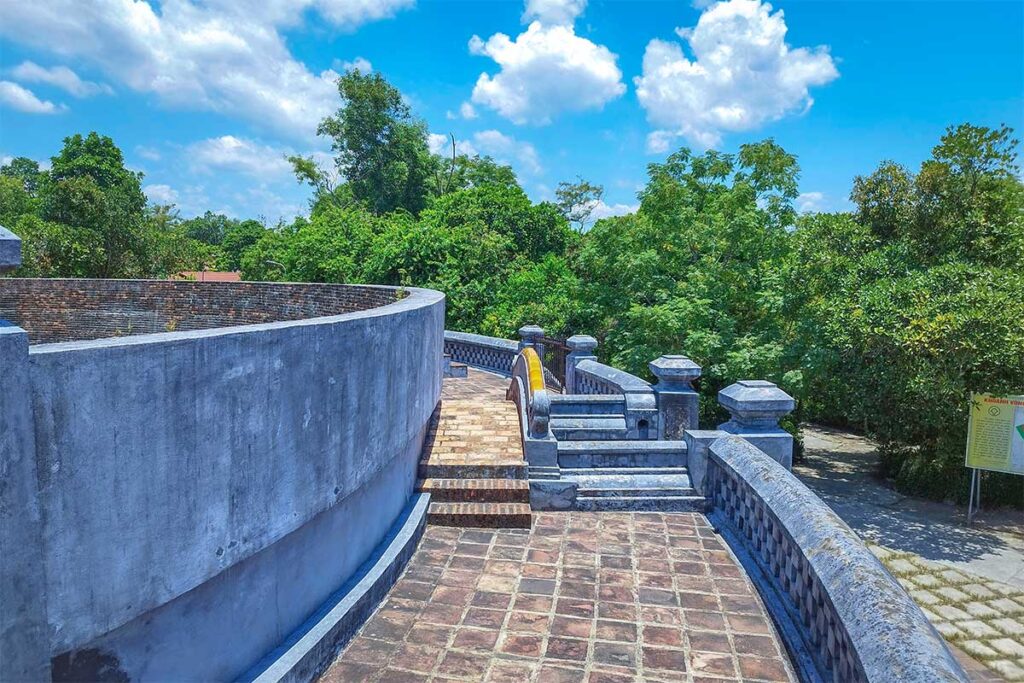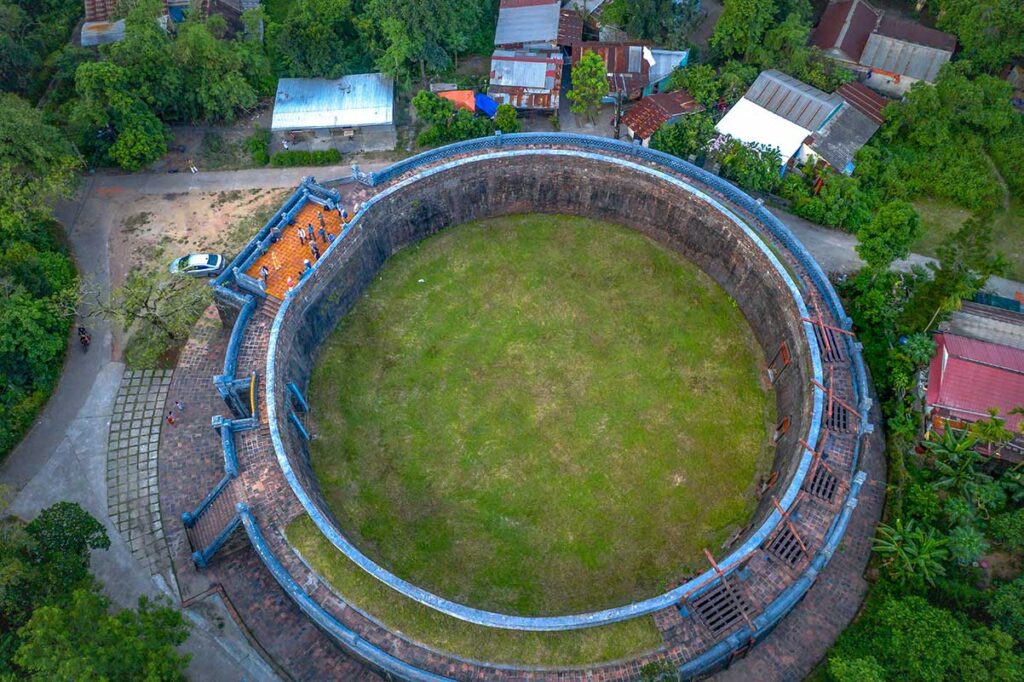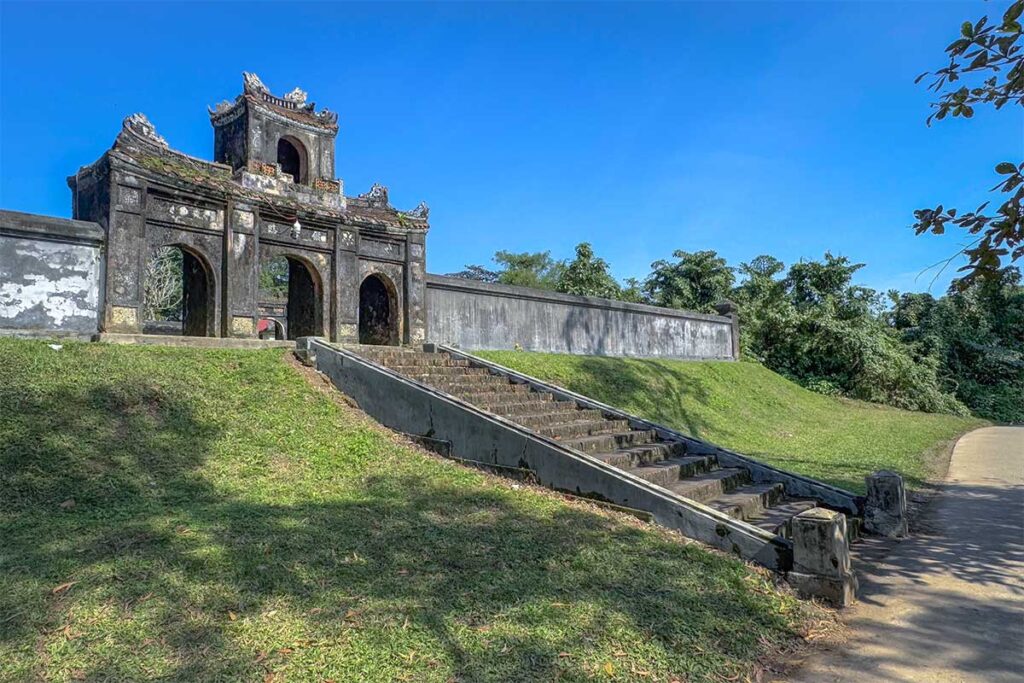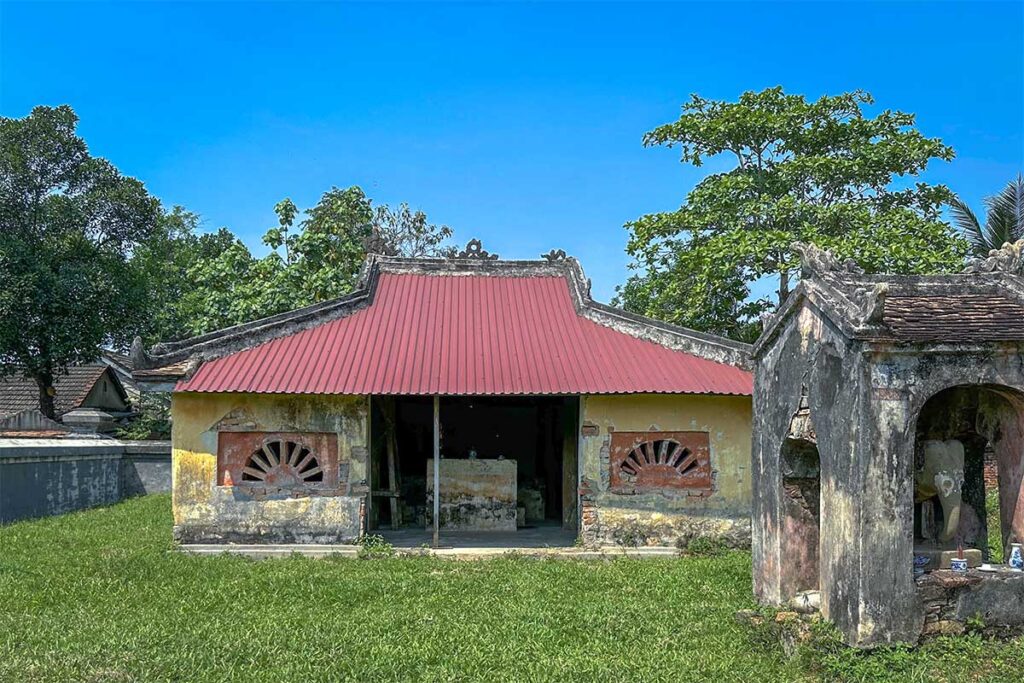What was Ho Quyen?
Ho Quyen, also known as the Hue Tiger Arena, was a royal battleground built in the 19th century for staged fights between elephants and tigers. These battles weren’t for public entertainment—they were held as ritual spectacles to symbolize power, with the elephant representing the monarchy and the tiger seen as a wild challenger. Located about 4 km southwest of Hue’s city center, the Hue arena is a circular stone structure that once echoed with the roars of animals and the cheers of royal spectators.

Although it’s no longer in use and partially overgrown, Ho Quyen remains a fascinating place to explore—a rare mix of imperial ceremony, folklore, and forgotten history.
History of the Hue Tiger Arena
Built for royal rituals, not sport
Ho Quyen was built in 1830, during the reign of Emperor Minh Mang, the second ruler of the Nguyen Dynasty. Unlike Roman gladiator arenas, this wasn’t designed for public bloodsport. The arena was strictly used for royal rituals in which trained elephants would fight captured tigers. These battles were meant to showcase the power and dominance of the emperor—symbolized by the elephant—over nature, chaos, and rebellion—represented by the tiger.
Why elephants always won
To ensure the right outcome, the battles were heavily staged. Tigers had their claws and teeth filed down or removed entirely, while the elephants were trained and often armored. The goal wasn’t competition—it was symbolism. A tiger occasionally tried to fight back, but most were quickly defeated or killed, reinforcing the message of imperial strength.
A hidden arena in Hue’s outskirts
The Hue arena was built just outside the city center, near Long Chau Temple (also known as the Elephant Temple), where the royal elephants were honored and cared for. Its circular design, made of brick and stone, includes high walls, arched gates for the animals, and steep stairs for the emperor and court to watch from above. Though now weathered and partially overgrown, much of the original structure remains.
Last use and gradual decline
The last recorded use of Ho Quyen for a live fight was in the early 1900s, under Emperor Thanh Thai. After that, the ritual lost its place in the changing values of Vietnamese society, especially with the decline of the Nguyen Dynasty and French colonial influence. Over time, the arena was abandoned, and for decades it was forgotten by locals and rarely visited.
Today, it stands in quiet decay—an eerie but fascinating relic of Vietnam’s imperial past, often missed by travelers focused on the more famous tombs and pagodas.
Highlights & What to see at Ho Quyen today
Although time and neglect have worn away parts of the Hue tiger arena, much of the original structure is still intact—and it’s easy to walk through and imagine what once happened here. Visiting Ho Quyen today feels a bit like discovering a hidden ruin: quiet, overgrown, and untouched by crowds. Here’s what you can expect to see when you explore the site:
1. The outer walls and arena entrance


The circular outer wall is made of thick, moss-covered brick and stone, standing about 5 meters high. You’ll find a main arched entrance used for animals and staff, as well as two smaller doorways for maintenance or ritual use. While parts of the outer wall are crumbling, the structure still clearly defines the boundary of the arena.
2. The fighting pit

Step through the main gate and you’ll be standing in what used to be the combat area, where elephants and tigers were brought to face off. The pit is now grassy and quiet, but its circular shape and sunken design remain obvious. From here, you can look up and see the raised platforms where royalty once observed the battles.
3. Royal viewing platform

At one end of the arena, stone steps lead to the elevated royal grandstand, where emperors and their court would sit. The platform is simple but still intact, offering a good view across the arena. It’s easy to imagine the emperor sitting above, watching his elephant crush the tiger below as a symbol of his strength and control.
4. Weathered details and hidden corners


If you take time to walk the full circle, you’ll find small staircases, worn stone blocks, and ivy-covered walls. The arena has a quiet, abandoned feel—part historic monument, part hidden ruin. There are no ticket booths or guards, so you’re free to explore at your own pace.
Long Chau Temple

Just a short walk from Ho Quyen, you’ll find Long Chau Temple, also known as the Elephant Temple. This small, peaceful site was built to honor the royal elephants that fought in the arena and served in military campaigns. While much less known than other temples in Hue, it offers a fascinating insight into how deeply respected elephants were in Vietnamese royal culture.

Inside the temple grounds, you’ll see elephant statues, incense offerings, and faded altars. Though the site is quiet and rarely visited, it adds an interesting layer of meaning to your visit—showing that the elephants weren’t just tools of power but were also commemorated as noble creatures in their own right.
How to get there & Visiting tips
Location
Ho Quyen Arena and Long Chau Temple are located about 4 km southwest of Hue’s city center, in Thuy Bieu Ward, along Long Tho Road.
Getting there
- By motorbike or bicycle: This is the most flexible way to visit, especially if you enjoy exploring smaller roads. The ride takes around 15–20 minutes from central Hue.
- By taxi or Grab: Expect to pay around 60,000–100,000 VND one way. It’s a short trip, but the area is quiet, so arrange for a return ride or have the driver wait.
- By tour: Some private Hue countryside tours or local guides include Ho Quyen as an off-the-beaten-path stop.
Visiting tips
- No entrance ticket is required. You can visit both Ho Quyen and Long Chau Temple freely.
- There’s usually no signage, so it’s helpful to read up beforehand or bring this guide with you.
- The area is quiet and shady, but still bring water and sun protection, especially if cycling.
- Don’t expect crowds—you’ll likely have the entire arena to yourself.



